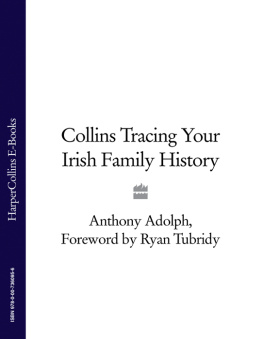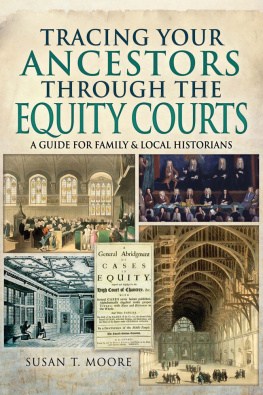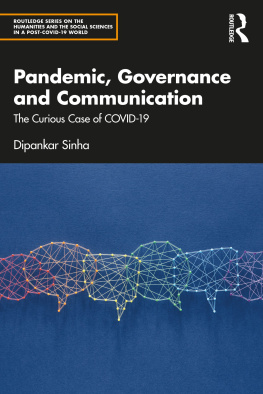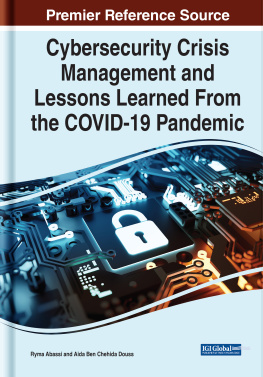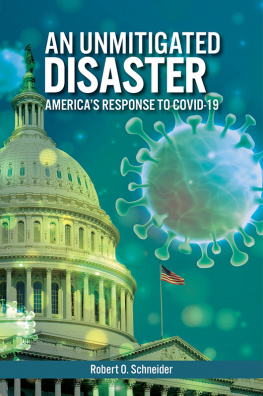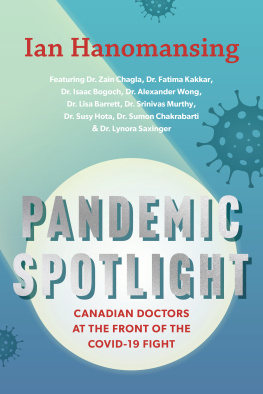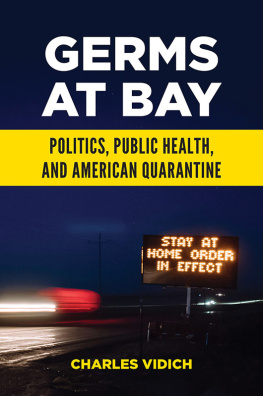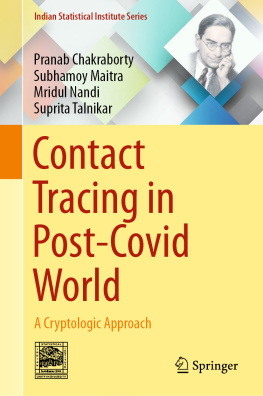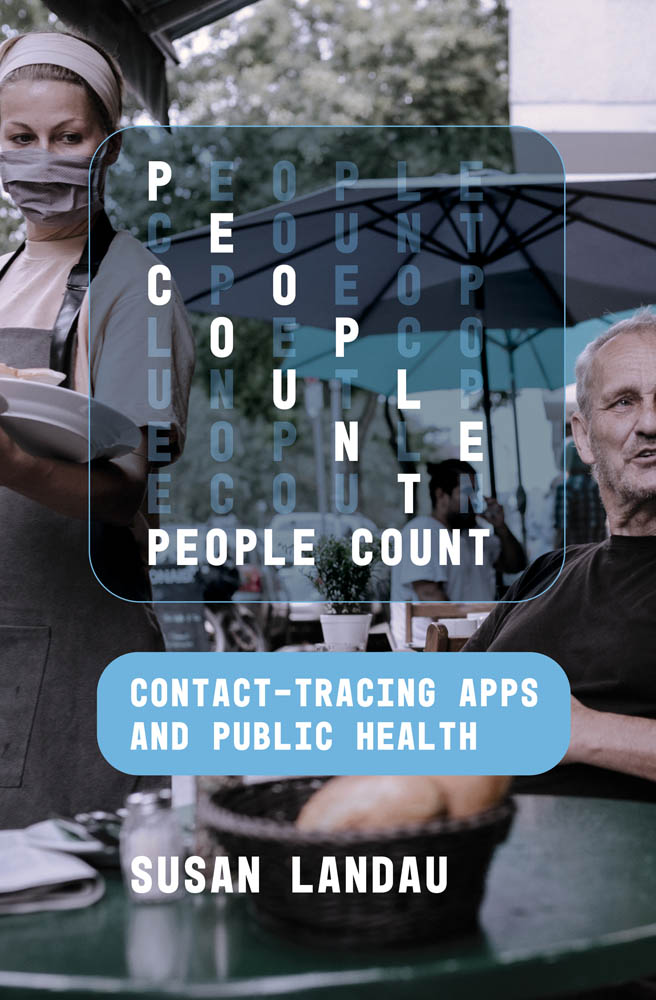
People Count
People Count
Contact-Tracing Apps and Public Health
Susan Landau
The MIT Press
Cambridge, Massachusetts
London, England
2021 Massachusetts Institute of Technology
All rights reserved. No part of this book may be reproduced in any form by any electronic or mechanical means (including photocopying, recording, or information storage and retrieval) without permission in writing from the publisher.
Library of Congress Cataloging-in-Publication Data
Names: Landau, Susan Eva, author.
Title: People count : contact-tracing apps and public health / Susan Landau.
Description: Cambridge, Massachusetts : The MIT Press, [2021] | Includes bibliographical references and index.
Identifiers: LCCN 2020054454 | ISBN 9780262045711 (hardcover)
Subjects: MESH: Contact Tracing | Mobile Applications | Pandemicsprevention & control | Privacy | Computer Security | Socioeconomic Factors
Classification: LCC RA418 | NLM WA 110 | DDC 362.1dc23
LC record available at https://lccn.loc.gov/2020054454
d_r0
To the memory of Joseph Rotblat, who taught me the responsibilities of being a scientist, and Chiune Sugihara, who saved my grandfathers life
Contents
In mid-February some colleagues and I flew to Brussels to brief European Union policymakers on a report on encryption policy we had prepared as part of a Carnegie Endowment for International Peace project. In our forty-eight hours there, we briefed members of the European Commission and European Parliament and held an evening convening with stakeholders from the government, industry, civil society, and academia. We managed a stop at a famed chocolate shop and a dinner out that included Belgian beer. As I headed home, one of the airline personnel asked me if I had been exposed to the coronavirus. No, I laughed, I have only been in Brussels. Little did I, or almost anyone else, know that the disease was already widely circulating in Europe.
I flew home, then two days later went with my husband to visit our son in Austin. It was a tiring tripas travel often is. Our son and daughter-in-law love to walk. I do too, but I am twice their age. We walked extensively through parks and interesting Austin neighborhoods. That Sunday night, I fell into bed, exhausted. The next morning, my husband flew back home, while I continued on to a planned trip to California. Tuesday morning, my throat was a bit sore. By the end of the day, my symptoms had blossomed into a cold. That was unfortunate, as I was staying with two sets of friends and I had numerous appointments.
Aside from socializing with my friends, this trip put me in the midst of thousands of strangers. Two of my appointments had been set up by Tufts University, my employer, to advise me on a program we were setting up on cyber security and policy. I was also speaking on a panel on encryption policy at a huge computer security meeting of 36,000 people. Two days later, I spoke at a smaller meeting organized by UC Berkeleys law school on technology and the law. It was no time to be ill, but ill I was, with sneezes, coughs, a runny nose, an upset stomach, and fever.
You know where this is going; I didnt, and neither did anyone else. I was surprised by the upset stomachIm always careful about what I eat when I travelbut not so surprised by fever; I can develop a fever at the drop of a hat. I was disconcerted by the fatigue that sent me to bed at 3:30 on Thursday afternoon and 6 pm on Friday. But even though I skipped the Berkeley banquet, I managed to give my two presentations. And because I was sneezing, I kept far away from people. No one on the panels, no one I had coffee with, and no one I visited fell illat least as far as I know.
I flew home. I was better the following week, though oddly and frighteningly, I coughed up blood a few times. But I was in Boston and my physician, a new one whom I had not yet met, was in western Massachusetts, where I live. I made an appointment for the following week in case the symptom persisted. This was now the first week in March, and coronavirus disease 2019 (COVID-19) was beginning to claim more of the American presss attention. More than once, I checked the website of the Centers for Disease Control and Prevention (CDC). But with the exception of the blood, all my symptoms pointed to a cold.
I had another busy week: Washington, DC, for an encryption policy briefing and running a two-day student symposium on cybersecurity policy at Tufts. Afterwards, my husband and I managed to squeeze in dinner with two old friends, biostatisticians at the Harvard Medical School and Brown University. They spoke very differently about the potential seriousness and danger of COVID-19 than did the news stories and CDC site. Two days later, I returned home as planned to western Massachusetts. It was March 10, and I was now recovered from my cold. I saw the doctor, who said my slightly painful earthe only remaining symptom of the dreadful coldwould heal on its own.
Two weeks later, the New York Times published an article that caught my attention, titled Lost Sense of Smell May Be Peculiar Clue to Coronavirus Infection. Id had that symptomanosmiawhen I arrived in California. Two weeks after that, another New York Times story changed my understanding of my illness.
Google Searches Can Help Us Find Emerging COVID-19 Outbreaks, wrote Seth Stephens-Davidowitz in an opinion column. Stephens-Davidowitz said that searches for my eyes hurt had risen in exactly the parts of the United States that were experiencing high COVID-19 rates. One has to be careful about such dataearlier claims that searches for flu could be an early indicator of flu outbreaks, even ahead of CDC data, were incorrectbut this hint was later borne out by scientific studies that showed eye symptoms similar to conjunctivitis in a small percentage of COVID-19 patients. Bingo! I had spent the first several days in California looking at my eyes in the mirror, for they had been bothering me and I was concerned that I had conjunctivitis (I didnt).
It was now over five weeks since I had fallen ill; it was impossible to get tested for COVID-19. Indeed, even when I was sick, it would have been impossible for me to get tested: I didnt fit the criterion of having been to China or of having been in contact with someone who had. And while that is one of the multiple reasons the number of US cases exploded, its also one of the factors that led to this book.
A second motivation to write this book relates to my research in cybersecurity. For twenty-five years, Ive worked on issues of encryption and wiretap policy. This work has brought me to Brussels; Washington, DC; and other places, but its also led me to ask important questions about the use of communications metadata. At just the moment in the spring of 2020 that the coronavirus was rapidly spreading around the world, I was exploring the types of private information one could discern from communications metadata. Meanwhile, I was hearing smart people propose using GPS data to track individuals with the diseaseeven though the coronavirus spreads best indoors, where GPS doesnt work well. I wrote a blog post to clarify this issue. As I learned that COVID-19 can spread from people who have no symptoms, I wrote another post on the efficacy of contact-tracing apps. Then, along with Christy Lopez and Laura Moy, I wrote a third on equity issues raised by using mobile apps for contact tracing. At that point, MIT Press sought a book on contact-tracing apps. Here I was.
There was a third reason for this book, too: what was occurring in my hometown. Ive lived in the countryside of New England for half my life, but I was born in New York City. That wonderful, dynamic, ethnically diverse city made me who I am. I am a first-generation American, the daughter of two people who never went to college (my father never finished high school). Yet I have a PhD from one of the best educational institutions in the world. Smarts got me there, but the education and encouragement I received from New York City public schools allowed me to flourish. For that I am forever grateful.
Next page



